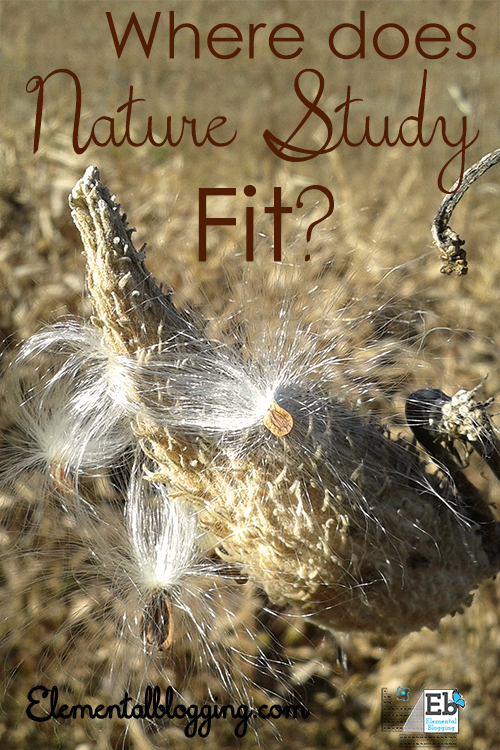 So where does nature study fit into a science education?
So where does nature study fit into a science education?
Nature study can be the core of your science curriculum…
OR
nature study can be the icing on the cake.
Either way, there is so much to learn from the natural world.
What is nature study?
Nature study is the study of the plants and animals around you, which can be found both inside and outside your home.
It employs the power of observation and is a truly accessible way to study science.
In the homeschooling world, nature study has two basic components, the nature walk and the nature journal.
How do you do nature study?
The Simple Plan
Nature study can be as laid back as:
“Hey kids look at this caterpillar I just found on the driveway. You see the way he walks along my hand. What does he feel like to you? Do you want to put him in a jar and go look him up on the internet to find out what kind of caterpillar he is?”
Once you get back inside, you can have your students write what they have learned about the caterpillar on a notebooking page. Then, you can take it a step further by trying to “hatch” the caterpillar into a butterfly or moth.
Remember – The main purpose of nature study is to introduce your students to the world around them as you spark their desire to learn more.
Adding More In
If you want more information, you can use the Handbook of Nature Study to help you guide your nature study time.
This valuable resource provides background information about a topic along with a few relevant questions to use for your nature study time. Barb at Harmony Art Mom has put together a wonderful guide on how to get started with this book. She also hosts the outdoor hour challenge which gives you a topic to focus on along with tips on how to go about accomplishing your outdoor study time. You can access all this information at her blog, Handbook of Nature Study. I highly recommend that you take a look if you are serious about nature study, as it will be well worth your time!
Nature Study Curriculum
If you want to use nature study as the core of your curriculum for science education, you can create your own or purchase something like the NaturExplorers series. Each of the titles in this series centers on a topic which is explored through living books, outdoor study time, notebooking and other activities. Each book also provides information on the scientific principles behind what you are observing outdoors.
Keep in mind that a good nature study curriculum should include outdoor study time, notebooking, and reading from living books or encyclopedias. You can read more about using the Nature Study approach to science education in our book, Success in Science.
When should you do nature study?
Nature study can be a scheduled part of your week or as a natural extension of your life.
In the past, when our daughter was younger, we set aside one day for nature study and the library, that way we had plenty of time to explore both! Now that she is older, we make nature study a natural element of our life through impromptu nature study.
In other words, when we our on one of our evening walks or out hiking, we take advantage of the things we run across, like the leaf fallen on the street or the bugs crawling on a milkweed pod as we pass.
Some of our best memories of our studying science have been during our nature study time. So, whether you chose for nature study to enhance your science curriculum or whether you choose nature study to be the core of your science education, you can’t go wrong!
What about you? Where does nature study fit into your science education plans? Do you find nature study easy or difficult to accomplish?
 Sign up below to receive weekly tips & tools for homeschool science and we'll send you a FREE copy of
Sign up below to receive weekly tips & tools for homeschool science and we'll send you a FREE copy of 
Great post! Thanks for including NaturExplorers!! I have Tweeted, FB’d and pinned. :o)
Happy to, it’s a great series for nature study. Thanks for helping to get the word out!